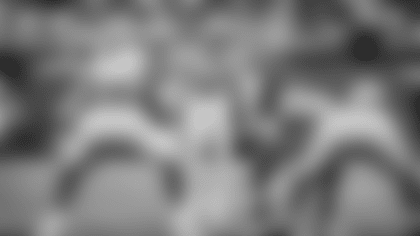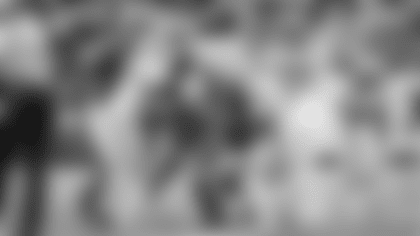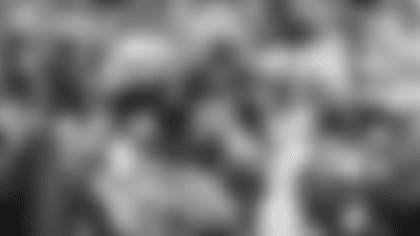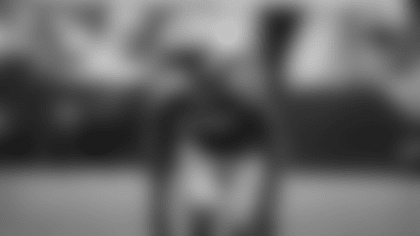A popular feature added to the annual Fan Fest program a couple of years ago was the '101' sessions on different aspects of football - X's and O's classes on some of the basics taught by the Packers coaching staff.
One well-attended session on Saturday was 'Defense 101' taught by assistant head coach and inside linebackers coach Winston Moss. With the Packers making the transition in 2009 to a 3-4 defensive front, several hundred of the more than 3,000 Fan Fest attendees grabbed a good seat on the fourth floor of the Lambeau Field Atrium for Moss' informative slide and video presentation and got some of their questions answered.
In going over the basics of the 3-4, Moss highlighted two positions that are especially critical to the scheme's success - the nose tackle and the outside linebackers.
Noting his confidence in Ryan Pickett as the No. 1 nose (but also that the depth behind Pickett remains to be settled), Moss emphasized the difficult job this unsung player performs in the base defense against the run.
"The most important part of this defense is the nose tackle," Moss said. "If you cannot get that nose tackle to command a double-team, you are in trouble. You can have the best personnel in the NFL, (but) if you are 'minus' in that area right there from a personnel standpoint, this defense cannot work."
Provided the nose tackle can command that double-team and the defensive ends to either side can control to some extent the blockers in front of them, the linebackers are free to flow to the ball and make tackles.
That leads to the next most critical spot, the outside linebackers, whose production is needed at a high level. Aaron Kampman is making the transition from defensive end to outside linebacker to start on one side, while players like Brady Poppinga, Jeremy Thompson, Brandon Chillar, Desmond Bishop and perhaps an offseason acquisition through free agency or the draft will compete to start on the opposite side.
"If you take away that run, and you have control of that run, and now that offense has to throw the football, your outside linebackers must create pressure, must put the quarterback on the ground, and must create impact plays for this defense to be effective," Moss said.
"This defense will not be impactful unless you get the outside linebackers to really disrupt the pass. Once you get the outside linebackers disrupting the pass, now you have all your variations with (blitzing from) inside linebackers, and adding other elements with the secondary."
To illustrate how the defense works on the field, Moss showed various clips of game film that focused on the different key positions and the jobs they perform. Several plays from Super Bowl XLIII featuring Pittsburgh's 3-4 defense against Arizona were shown, including one in which the nose tackle took up two blockers to short-circuit a running play without even making the tackle, and another where the defense disguised its scheme against the pass by having the outside linebackers - who are normally rushers - drop back into coverage as the inside linebackers blitzed up the middle to overwhelm the interior of the offensive line.
Moss also dug into the film archive to show how two of Green Bay's new defensive coaches executed the scheme when they played it for the Steelers. Outside linebackers coach Kevin Greene was shown making a sack "back in the day," as Moss said, against Oakland, beating a slower offensive tackle around the edge. Safeties coach Darren Perry also was shown making an interception against the Cowboys from a three-deep look in the secondary.
In explaining how the defense's front and back ends (the front seven and the secondary) work together, Moss emphasized that the scheme can and must make it harder for the offense to figure out what it's doing, i.e., where the pressure is coming from and whether the defensive backs are playing zone or man-to-man.
"We're going to have to do a very good job of disguising our coverage, disguising our alignments, so an offense cannot just line up, find a soft spot, and complete a pass," Moss said. "That's going to be the chess match, play in and play out, in our scheme."
Moss noted it's also incumbent on the players to play smart and with good instincts, because combining instinctiveness with the ability to create confusion can lead to game-changing plays.
Moss illustrated that by showing film from various angles of the biggest play of Super Bowl XLIII, when Pittsburgh outside linebacker James Harrison stepped into the passing lane where Kurt Warner was trying to hit Anquan Boldin on a slant at the goal line, intercepted the ball and ran it back 100 yards for a touchdown on the final play of the first half.
Moss noted that Harrison was supposed to be blitzing on the play, just like the inside linebacker next to him. But at the snap, Harrison noticed the offensive left tackle was free to swallow him up, so rather than eliminate his possible impact on a play that was going to unfold in a hurry, he figured Warner's hot read against the blitz would be the quick slant. He was right and created a 14-point swing on one play.
"That is a great play, being instinctive, not wasting himself, ... and making one of the greatest plays in Super Bowl history," Moss said. "Look at Kurt Warner. He thinks he's got a touchdown, going into halftime, feeling good about himself. Heartbreaker."
The scheme is by no means perfect, of course. Moss also showed Arizona's big touchdown to take the lead in the Super Bowl with less than three minutes remaining, when Larry Fitzgerald found an opening in the middle of the field and split the safeties for a 64-yard touchdown.
Pittsburgh, of course, bounced back and drove the length of the field in the final two minutes to win the Super Bowl, and Moss pointed out that kind of resiliency will be needed for the Packers to get back on the right track after a 6-10 season.
"We didn't rise to the occasion last year as a team, specifically as a defense," Moss said. "But we're going to have answers and we're going to be able to respond to adversity."
{sportsad300}News & Notes
President and CEO Mark Murphy provided an update to the media Saturday on the new Ray Nitschke Field on the east side of the Don Hutson Center, noting that the construction crews worked throughout the winter and have made substantial progress on what will ultimately be a new training camp practice field with more extensive bleachers.
"That's going to be a real enhancement for our fans to have a dedicated area for training camp," Murphy said. "We're hopeful with good weather in the spring it will be ready and we'll be able to use it. It's going to seat about 3,000."
Murphy also said there's going to be a heating system installed underneath roughly half the field, or about 70 to 75 yards of the 150-yard expanse, so the Packers can continue to practice outside late in the season when the weather gets cold. The new Nitschke Field will have the same playing surface - DD Grassmaster - as Lambeau Field and Clarke Hinkle Field on the west side of the Hutson Center, which will now be used as the primary regular-season practice field following training camp.
"I think being able to practice on that surface throughout most of the season will be very helpful for us," Murphy said. "The new field will be used during training camp, then we'll switch over to Hinkle Field for practices through the early portion of the regular season and as the weather turns colder, we can go back to the new field."














